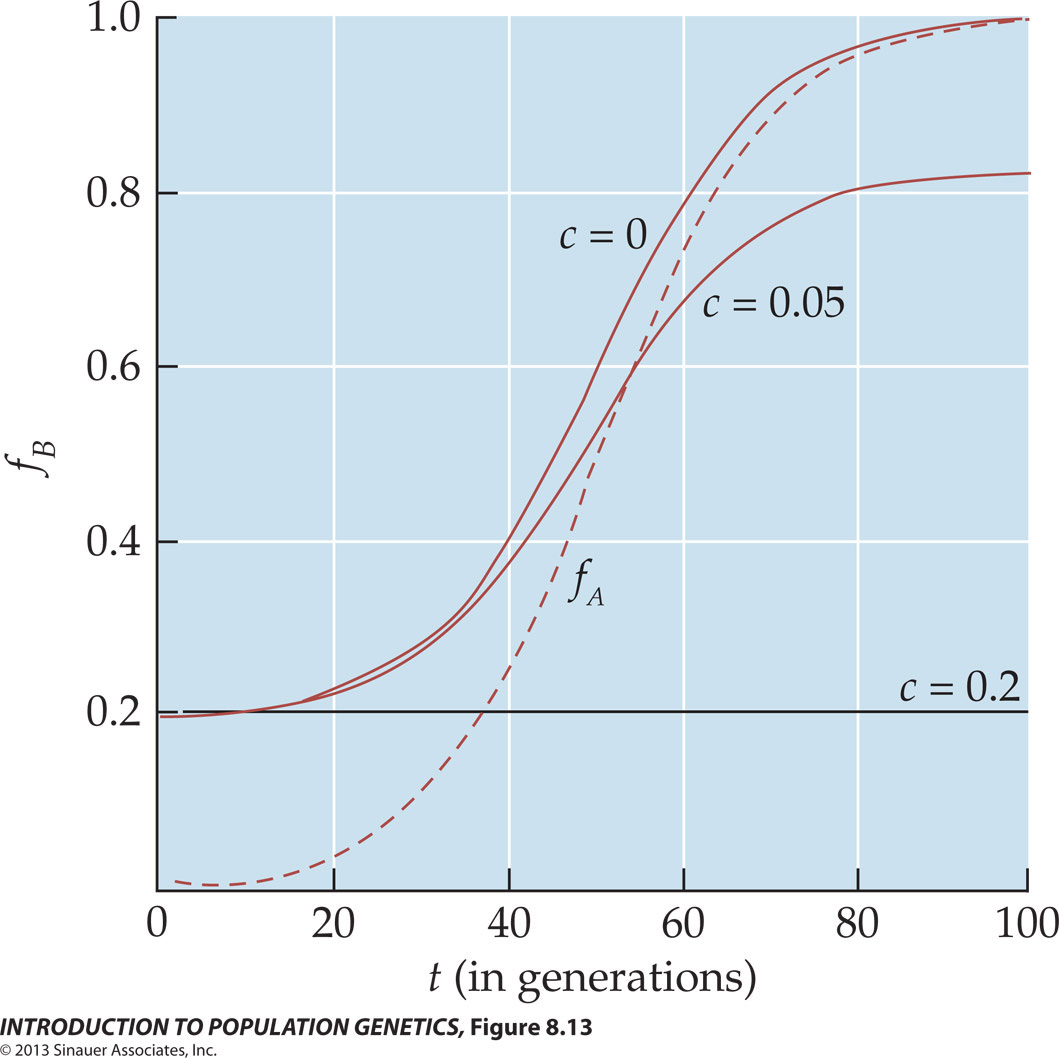
Example of "hitchhiking effect" in a haploid model
Given a strongly selectively advantageous new mutant
allele at initial fA =
1/200 = 0.005 and a
genetically-linked neutral allele at initial fB
= 0.2, fB
will increase along with fA
("hitchhike") more or less strongly according to the
recombination frequency (c = linkage
coefficient). For completely linked loci (c
= 0), fB
will converge on fA
at fixation. For moderately distant loci (5%
recombination, c = 0.05), fB
will increase along with fA,
but as the linkage is broken over successive
generations, fB
will cease to increase. [Note the analogy to a
hitchhiker who is "only going a little ways"].
For distant loci (20% recombination, c =
0.20), linkage breaks down in only a few
generations, and the original fB
remains unchanged.
Figure © by Sinauer; Text material © 2017 by Steven M. Carr